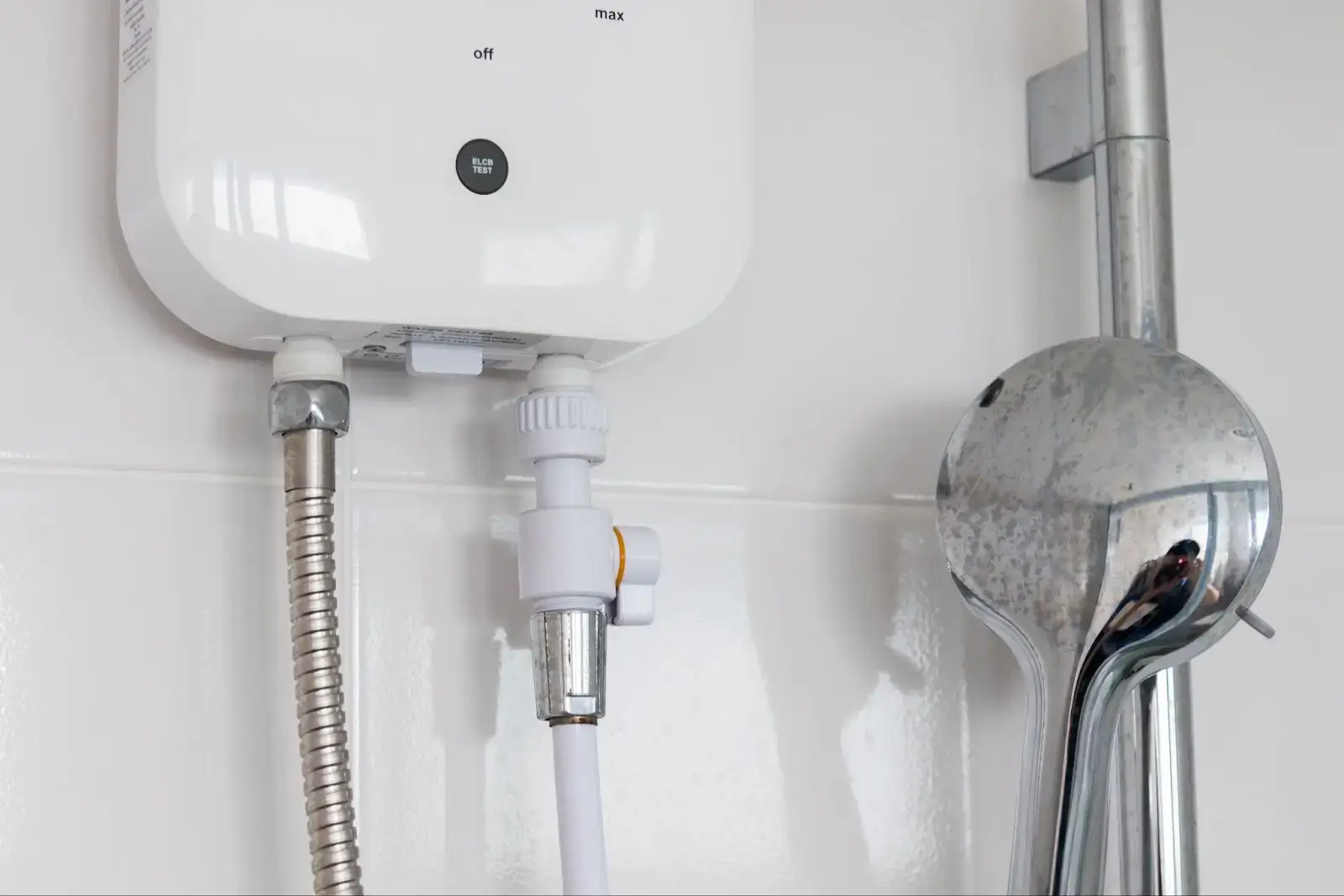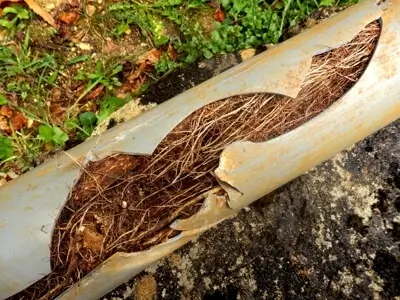Have you ever wondered how your HVAC system provides hot and cold air for your home? Well, that's all thanks to the heat exchanger — a component in your HVAC system that turns cold air into warm air and vice versa.
A gas furnace has a heat exchanger—a metal barrier that sits between the combustion chamber and the blower.
It allows hot air from the furnace to be dispensed into your home without leaking harmful combustion gasses in the process.
Like any other mechanical equipment, it's prone to damage and wears over time.
When the heat exchanger stops functioning properly, it can cause cracks and harmful carbon monoxide leaks.
In this article, we dive into what a heat exchanger actually is, how it works, and the various factors that cause it to crack over time.
What is a Heat Exchanger?
To put it simply, heat exchangers are responsible for transferring heat between two or more liquids inside home appliances. You can find them in refrigerators, air conditioners, and your central heating system.
In furnaces, they’re responsible for heating the air in your home. It’s typically made of metal coils that are designed to effectively absorb and transfer heat between two mediums.
How Do Heat Exchangers Work?
A gas furnace has a heat exchanger near the combustion chamber. Electric furnaces have it near the condenser and evaporator coils. These heat sources warm up the heat exchanger and start the heat exchange process. A blower fan then distributes the heated or cooled air through the ducts and out the air vents.
Strong metals that won't shatter when subjected to excessive heat are ideal for use in heat exchangers. Furnace components such as shells, plates, spiral tubes, and adiabatic wheels are made with heat-resistant metals.
Most exchangers are constructed using one of two systems: coils or tubes. These components connect to the burner or flue pipe.
Some furnaces are designed with two heat exchangers: a primary and secondary system. This doubles the amount of pressure and temperature the heat exchanger is able to take on. As a result, a furnace or air conditioner can heat or cool a room much quicker.
Primary
Primary heat exchangers are known to transfer heat more efficiently, as they're made of aluminized steel rather than stainless steel. Modern furnaces are made of several tubes that determine how fast the system can heat the home. The more tubes your system has, the faster it can create heat.
Secondary
The secondary heat exchanger extracts additional heat from the flue air by condensing water vapor, delivering latent heat into the secondary heat exchanger system. The process substantially improves the furnace's efficiency.
Secondary heat exchangers are often built with heat-resistant coated steel or stainless steel.
Types of Heat Exchangers
Heat exchangers come in several shapes and sizes. Each HVAC system will have a different heat exchanger type, depending on its model and manufacturer.
Let's take a closer look at the types of HVAC heat exchangers:
Shell and Tube Heat Exchanger
This type of heat exchanger is made of several tiny tubes secured inside a cylindrical shell. On the outside, it looks very much like a lightsaber when it's sheathed.
The tubes inside this furnace heat exchanger are held down using a tube stack or tube bundle. Tube bundles can either be fixed (permanently attached) or floating tube stacks.
The great thing about floating tube stacks is that it can easily contract and expand in varying heat conditions. They’re much simpler for homeowners to clean and HVAC technicians can easily remove it during maintenance checks or repairs.
Finned-Tube Heat Exchanger
You can find finned-tube heat exchangers inside various HVAC systems, including multi-split air conditioners, split air conditioners, and heat pumps. It’s made of aluminum sheets and copper tubes that have been treated with anti-corrosion substances.
They’re the cheapest type of heat exchanger to produce. Thus, it’s used more often than other types. It’s also much easier to replace and repair, making dysfunctions easier for homeowners to resolve.
Unfortunately, they can be bulky, making them an unsound choice for compact HVAC units.
Brazed Plate Heat Exchanger
HVAC systems that use water as a heat-transfer medium often have brazed plate heat exchangers. A few examples include hybrid chillers, air source heat pumps, and water source heat pumps.
Brazed plate exchangers are made from corrugated stainless steel and copper sheets. They’re often colored black and are wrapped with closed-cell insulations, which prevent condensation from affecting the metal.
Since they’re smaller than finned-tube heat exchangers, brazed plate heat exchangers are the perfect choice for more compact HVAC units. Unfortunately, due to their compact size, they’re also much more prone to blockages.
Homeowners may need to get them checked and maintained more often
Tube-in-Tube Heat Exchanger
Tube-in-tube heat exchangers are used in most water-cooled VRF units. It’s made of corrugated copper and stainless steel with a protective PVC layer.
Due to its compact shape and size, tube-in-tube heat exchangers are often the perfect choice for ceiling and cabinet applications.
Since water-cooled VRF units aren’t as popular as air conditioners, this type of heat exchanger is rarely seen on the market.
Plate Heat Exchanger
Plate heat exchangers are often seen in large cooling appliances. They’re made of stainless steel sheets stacked together and frequently function independently of any HVAC system.
The size of most HVAC plate heat exchangers varies depending on their intended use. Despite having similarities to brazed plate heat exchangers, plate heat exchangers have more gaskets, making them bulkier and heavier.
Common Heat Exchanger Problems
A heat exchanger is an airtight vessel that provides heat and comfort for the home. It's necessary to keep its seals to prevent carbon monoxide, unheated air, and flue gasses from leaking. Unfortunately, heat exchangers can form dysfunctions over time due to damage or deterioration.
Cracked Heat Exchanger
Metal expands when it's heated every time the furnace is turned on by the thermostat. Once the burners are turned off and the heat is no longer necessary, the exchanger's heated metal cools. This constant switching between heating and cooling can cause the furnace heat exchanger to crack.
A cracked heat exchanger means it's possible for harmful and combustible gasses to escape from the system and leak into your house through the ductwork.
Other things can cause your heat exchanger to crack. For instance, failing to change your filters or using the wrong thermostat settings can cause your gas valves to become worn out. As a result, your heat exchanger overheats and cracks.
If you suspect a carbon monoxide leak in your home, don't hesitate to contact an HVAC technician to help with your situation.
Corroded Components
The excessive moisture inside the furnace might cause heat exchangers to corrode and rust out. If you have a high-efficiency condensing furnace, you might be at risk of experiencing this misfortune.
When working properly, the heat exchanger can easily expel condensate from a built-in drainage system. This prevents excessive moisture from buildup inside the unit.
However, when a clog develops in the drain line, the condensation isn’t drained properly. Over time, this can lead to the heat exchanger and the drain line rusting and corroding.
Premature Metal Failure
Metal fatigue can occur early in some circumstances, requiring an expensive early furnace replacement. Burner inconsistencies or insufficient system airflow may be the underlying reason, yet both have the same effect of overheating the metal.
Need Professional Heat Exchanger Repair or Replacement Services?
Heat exchangers generally have a life expectancy of 10 to 20 years. Some manufacturers provide a lifetime guarantee, which is usually a sign that they are composed of high-quality materials.
A heat exchanger may not survive 10 years in some circumstances if it is built with inferior materials and is poorly designed.
You have two choices when faced with a cracked or damaged heat exchanger: replace the furnace or buy a new exchanger.
Most heat exchangers are repairable. However, it is probable that additional parts and valves in the furnace may need to be replaced simultaneously. In this case, getting repairs would be more expensive than getting a complete replacement.
Ultimately, the choice of whether to get repairs or a replacement depends on your budget and immediate needs. An HVAC professional can help you decide on the solution you need for your situation.
Sunset Heating and Cooling Electrical
We know how a faulty heat exchanger can derail the proper functions of your heating appliances. Here at Sunset Heating and Cooling Electrical, we strive to provide our clients with the best heating, cooling, and plumbing solutions in Portland.
To ensure the complete restoration of the comfort and safety of your home, we only work with skilled and trained HVAC technicians.
Our team has some of the best HVAC experts in the area, trained in the latest technologies and techniques to keep up with shifting industry and customer standards.
Whether you’re looking for professional furnace repair or furnace replacement services, we are confident that our technicians can meet your demands.
Reach out to our office today for more details about our services or to get a free quote.
Call us at (503) 500-5866
We look forward to working with you!







